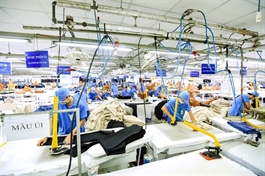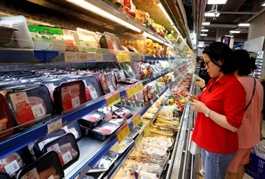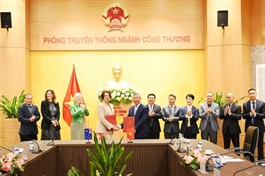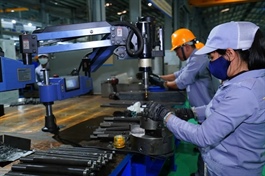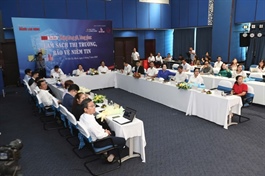Seafood firms push export promotions
Seafood firms push export promotions
Vietnam’s seafood exports achieved positive results so far this ye thanks to efforts to reinforce the key markets.
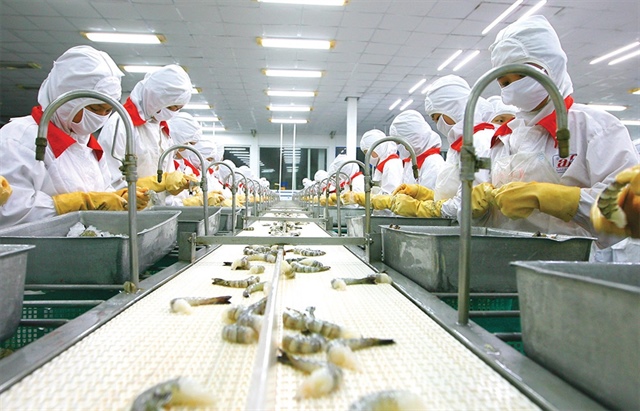
Some seafood groups have been growing smoothly thanks to key markets in Asia, Photo: Le Toan |
Vietnam’s seafood exports hit $4.07 billion in the first five months of 2025, up 14 per cent on-year, according to the Vietnam Association of Seafood Exporters and Producers (VASEP). China, the US, and Japan remained the top three markets, accounting for 20 per cent, 16 per cent, and 15 per cent of total exports, respectively.
Shrimp remained the key export items, generating $1.3 billion in revenue, a 33.5 per cent on-year rise, driven by strong demand recovery in Japan and China. Notably, lobster emerged as a standout growth driver, with export value skyrocketing by 295 per cent to $335 million, an impressive leap that highlights Vietnam’s growing foothold in the premium seafood segment.
Exports to Comprehensive and Progressive Agreement for Trans-Pacific Partnership markets such as Japan, Canada, and Mexico continue to show strong growth momentum, reaching $224 million in May, a 7.9 per cent increase compared to the figure of the same period of 2024, and over $1.15 billion in the first five months, up 24.3 per cent on-year, according to the statistics published by VASEP in Ho Chi Minh City on June 12.
Tran Anh Khoa, CEO of Anh Khoa Seafoods, remains optimistic as the company’s key markets are China and other Asian countries. The company specialises in manufacturing, processing and importing and exporting seafood products. The main products are tiger prawns and white leg shrimp for export. Currently, Anh Khoa Seafoods can provide customers with up to 700 tonnes per month.
“From the beginning of 2024 to the end of May 2025, the company has been operating smoothly and has seen positive growth signals from its key markets in China and other Asian countries,” Khoa said.
“Exports to China may face challenges at some points, but markets like Japan and South Korea make up for it. On the other hand, our strength lies in our less affected shrimp products. The demand for consumption in the Chinese market remains strong, and Chinese consumers are also inclined towards convenient products, which is a strength of Vietnamese enterprises. This is something that businesses can leverage and exploit,” Khoa added.
Despite the positive results, seafood processing and exporting firms are proactive in preparing plans to avoid the impacts of the US’ final reciprocal tax rate, which is forecasted to be finalised on July 9.
For Sao Ta, a member of The PAN Group, chairman of the board Ho Quoc Luc, said, “The level of impact depends on whether the tax is applied to all or each item. If the tax rate for Vietnam is 46 per cent and the competitor is 20 per cent, Sao Ta will be forced to withdraw from the US market.”
If the tax rate is the same, the US will become a closed market, Luc said. “If we cannot continue exporting to the US, we will increase our penetration into other markets, such as Canada, Australia, South Korea, and especially Japan, where Sao Ta has inherent strengths. China is also a promising market that we are monitoring to be ready to enter when conditions are right,” Luc added.
Sao Ta’s export revenue is expected to reach $300 million by the end of 2025, along with a profit of $500 billion. Sao Ta is one of the top three shrimp exporters in Vietnam.
“Several of its members reported a gradual decrease in delivery activities since May 20 to mitigate risks. Cost pressures, market fluctuations, and uncertainty about policies have slowed down transactions, affecting the total turnover for the month. Some importers in the US have announced postponing orders in the second quarter to await clearer tax policies,” said Le Hang, deputy secretary general of VASEP.
While waiting for the US’ final reciprocal tax rate, VASEP also predicts three scenarios in seafood export activities. With the average scenario of a 10 per cent reciprocal tariff, seafood exports may only reach $9.5 billion. The reason is that the increased costs and export prices of products to the US market make Vietnamese goods less competitive compared to other countries.
In addition, the profit margins of businesses are narrowed, and various additional costs are incurred in the production process, including product source traceability. Markets such as China, ASEAN, Japan, and the EU may absorb some of the impact from the US market.
“In the worst-case scenario of a reciprocal tariff exceeding 10 per cent, Vietnam’s seafood exports could drop to only $9 billion, or even lower. The US market would no longer be a stable consumption market for Vietnamese seafood, reducing its value to below $1.5 billion. The competitiveness of Vietnamese goods would weaken against competitors such as Ecuador, India, Thailand, or Indonesia,” VASEP noted.
“The US’ reciprocal tax is a complicated chessboard, so the scenarios for the seafood industry that the VASEP has proposed are necessary to visualise. However, the reality is still very variable because, in addition to the tax rate that the US will charge Vietnam, it may also apply the same tax rate to other countries,” said Tran Van Linh, chairman of the board at Thuan Phuoc Commercial Seafood.
- 14:58 03/07/2025




